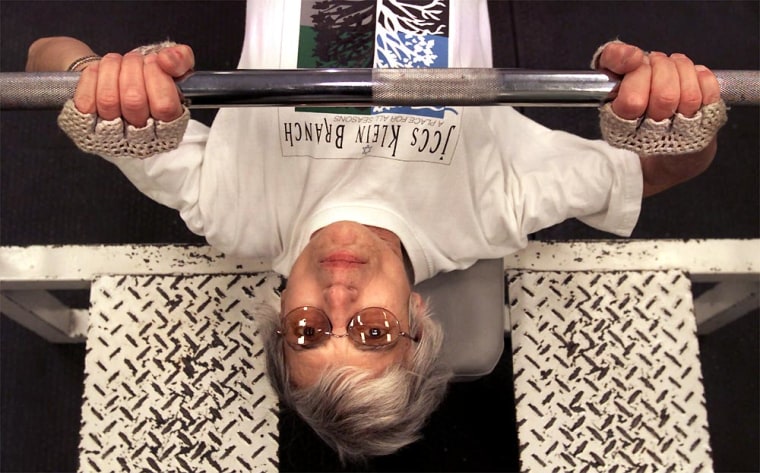Most older adults, even highly active ones, skip strength training. Strength training, also called resistance training, is exercise that requires muscles to move against a weight or resistance. Muscles become stronger as a result. This type of exercise may involve free weights, like dumbbells, large machines, or simple calisthenics.
Current exercise habits among seniors fall far short of the national health objective of at least 30 percent of this group doing strength-building exercises. According to the 2001 National Health Interview Survey of more than 5,500 people, only about 11 percent of adults age 65 and older participate in strength training at least twice a week. Individuals in fair-to-poor health were among the least likely to be strength training, as were women, the obese and the less educated.
You're never too old to exercise
Many people think that beyond a certain age, you become too weak to strength train or benefit from it. But research shows the complete opposite. Without adequate muscle exercise, most adults lose 20 to 40 percent of the muscle they had as young adults. With too much muscle loss people have difficulties performing daily activities that allow them to live independently.
Experts say that even small gains in muscle – too small to see – can make significant differences in how seniors live. Strength training can affect whether an older person can get out of a chair without help. It can also influence their sense of balance, risk of falls and fractures, and the ability to climb stairs or carry groceries. Strength training can even make bones stronger and weight control easier.
One recent study of seniors showed that after six months of strength training, strength in a variety of muscle groups increased 31 percent for the duration of the two-year study. Other studies show benefits for the frail elderly living in nursing homes. People who had formerly needed walkers to get around could use a cane instead.
Maintain balance and flexibility
The National Institute on Aging recommends strength training of all major muscle groups: arms, shoulders, chest, abdomen, back, hips and legs, as well as exercise to enhance grip strength. The NIA has even developed a free exercise guidebook to help seniors train safely. It includes 12 strength-training exercises, equipment options, safety cautions (especially for those who have had hip replacements) and resources for additional free information. View it at www.nia.nih.gov/exercisebook or call the National Institutes of Health information center at 1-800-222-2225 to request a free copy.
Seniors often identify access to appropriate equipment as a barrier to strength training. While free weights or Nautilus-type equipment at fitness centers are one option, elastic bands or resistance tubing, which are sold at sporting good stores and discount chains, are effective at keeping seniors strong. Even cans of food or water bottles filled with beans or sand can work.
The American Institute for Cancer Research emphasizes regular exercise, ideally an hour a day, as a vital part of a lifestyle to lower cancer risk and promote good health and a healthy weight. Aerobic exercise like walking, biking and swimming can be the mainstay of your activity. But we all need to include exercise that maintains our flexibility, balance and strength. And that doesn’t change as we age.
